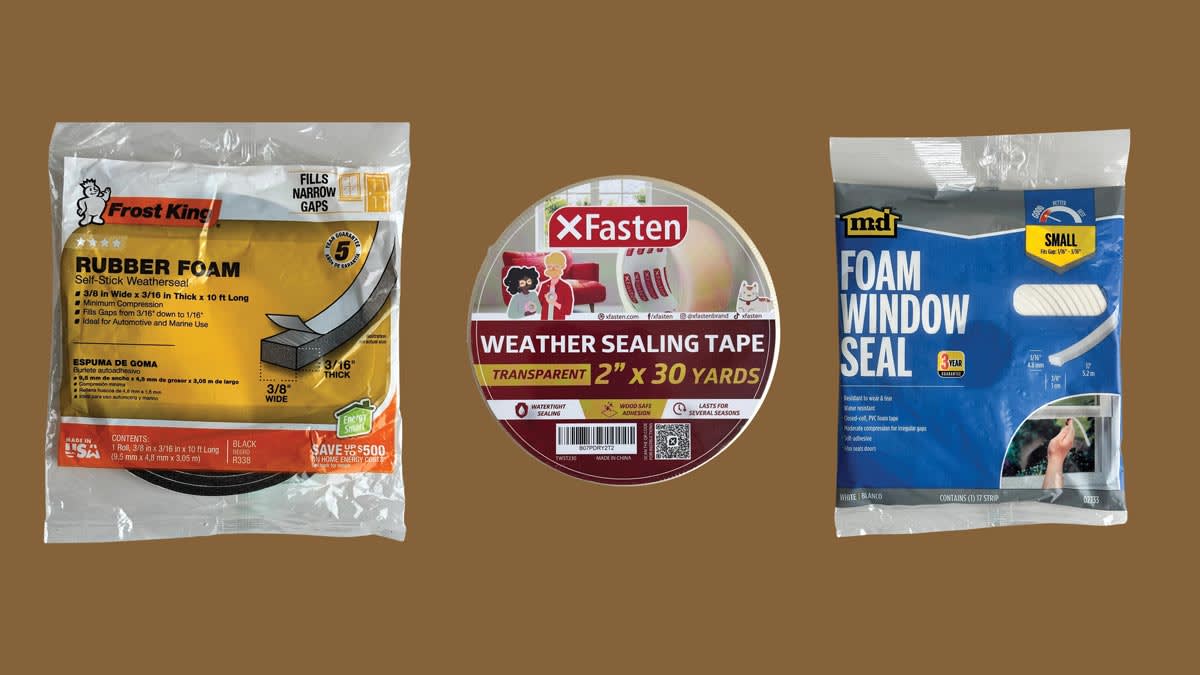Best Weather Stripping and Window Sealing Tapes

While these terms are often used interchangeably by manufacturers, they describe two different but similar products. Both are installed on windows and doors to block out drafts in cold weather and keep cold air in during hot weather. Some tapes also claim to keep water from seeping through windows, too. According to Energy Star, “Air that leaks through your home’s envelope—the outer walls, windows, doors, and other openings—wastes a lot of energy and increases your utility costs.” Some estimates by the Environmental Protection Agency put the monetary value of sealing off the gaps where air escapes your home and adding insulation at “an average of 15 percent on heating and cooling costs.”
Installation of both is simple: Apply the adhesive strips along the surface of a drafty window or door where air is escaping. No tools other than scissors are necessary. Window sealing tapes cover the gaps and a portion of the door or window, preventing them from being opened while they are installed. Weather stripping tapes made from foam fill gaps between windows and windowsills without sealing windows completely, so they can still be opened as needed. To properly fill a gap using foam weather stripping tapes, you must measure the gap you want to fill to be certain that the foam is the right thickness (the same thickness as the gap or a little bigger because these foams can compress).
Paul Hope, a deputy content editor at CR and regular home project DIYer, says window sealing tapes are the “better choice for windows or doors in basements, attics, haunted guestrooms, basically, anywhere you don’t go frequently. For more heavily trafficked spots, weather stripping is the better choice, obviously for primary entry doors, but also for things like a kitchen window, since even in the dead of winter you may want to crack the window while cooking to get rid of smoke.”
Source link










